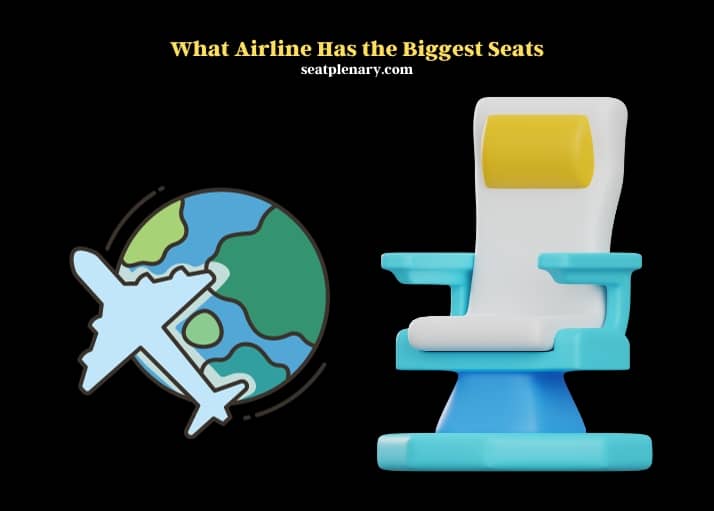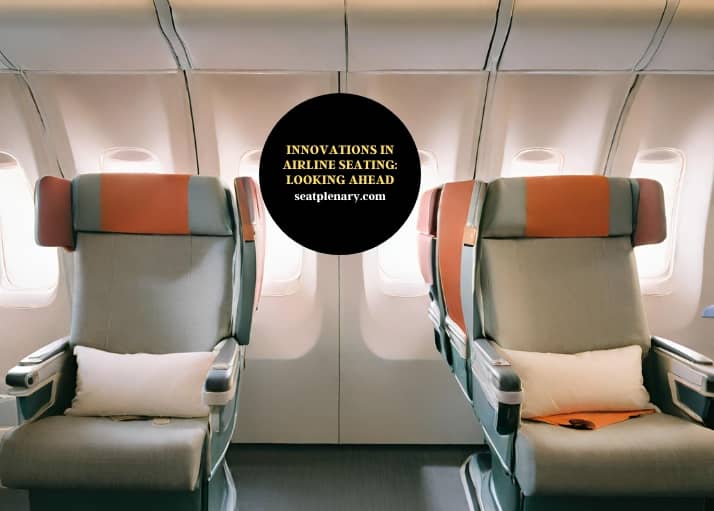Airlines with the largest seats typically include carriers like JetBlue, Delta Air Lines, and Southwest Airlines. These airlines are known for offering more generous seat dimensions, especially in their premium classes.
The quest for comfort in the skies has led to a significant focus on seat size among airlines. In the competitive world of air travel, seat size is a critical factor that airlines use to attract passengers. While budget carriers often emphasize more seats per plane to keep costs low, premium airlines invest in larger, more comfortable seating to enhance the passenger experience. This difference is most notable in business and first-class cabins, where airlines like Emirates and Singapore Airlines offer luxurious suites that redefine the meaning of comfort in the air.

The trend towards larger seats is not just confined to premium classes. Some airlines are recognizing the importance of comfort in economy class as well. Innovations in seat design are allowing for more efficient use of cabin space, enabling airlines to offer slightly larger seats without reducing the number of passengers. This shift is a response to passenger feedback, as comfort becomes a more significant factor in airline selection. As the industry continues to evolve, the focus on seat size and comfort is likely to remain a key area of competition among airlines.
Airline Seat Size Showdown: A Comprehensive Comparison
Air travel comfort significantly depends on seat size, a factor that varies widely among airlines. This section delves into the average seat dimensions offered by different airlines. A detailed comparison chart illustrates the variations in seat width and pitch across major carriers.
Passenger comfort ratings are analyzed to provide a holistic view of the travel experience. These ratings, gathered from customer feedback, reflect real-world experiences of space and comfort during flights.
Average Seat Dimensions by Airline
| Airline | Economy Seat Width (inches) | Economy Pitch (inches) |
| Delta Air Lines | 17-18 | 30-32 |
| American Airlines | 16-18 | 31-32 |
| United Airlines | 17-18 | 31-32 |
| Southwest Airlines | 17 | 31-33 |
| Alaska Airlines | 17-18 | 31-32 |
Decoding Seat Comfort: Beyond Size
While size matters, other factors play a crucial role in seat comfort. This section examines the influence of legroom, seat pitch, width, ergonomic design, and material quality. Legroom and pitch are critical for long-haul comfort, while seat width affects personal space. Ergonomic design and high-quality materials can enhance comfort, even in smaller seats. Insights from ergonomic experts and material scientists are included to provide a deeper understanding of what makes a seat comfortable.
Economy vs. Premium: Space and Value Compared
The disparity in space between economy and premium classes is more than just a matter of inches. This section presents a cost-benefit analysis of the additional space provided in premium seating compared to economy. Customer satisfaction surveys highlight the perceived value of this extra space. The analysis reveals whether the price difference between classes is justified by the comfort and space offered.
Space Difference Between Economy and Premium Classes
| Airline | Economy Width (inches) | Premium Width (inches) | Economy Pitch (inches) | Premium Pitch (inches) |
| Delta Air Lines | 17-18 | 19-21 | 30-32 | 35-38 |
| American Airlines | 16-18 | 19-21 | 31-32 | 36-39 |
| United Airlines | 17-18 | 20-22 | 31-32 | 37-40 |
| Southwest Airlines | 17 | N/A | 31-33 | N/A |
| Alaska Airlines | 17-18 | 21 | 31-32 | 36 |
Note: The data presented in these tables are based on the latest available information and may vary depending on the specific aircraft model and configuration used by each airline.
Seat Size: A Health and Safety Perspective
The size of airline seats isn’t just about comfort; it has significant health and safety implications. Cramped seating can lead to health risks like deep vein thrombosis. This section reviews safety regulations and expert opinions on ideal seat dimensions, providing insights into how seat size impacts passenger health and safety during flights.
Innovations in Airline Seating: Looking Ahead
The future of airline seating is shaped by technological advancements and changing passenger preferences. This final section explores emerging technologies in seat design and industry forecasts. Surveys on passenger preferences are examined to understand what travelers expect from future seating solutions. The insights gathered indicate a trend towards smarter, more comfortable, and possibly even customizable airline seating in the years to come.

Frequently Asked Questions (FAQs)
Do Bigger Seats Affect Ticket Prices?
The size of airline seats can influence ticket prices, but it’s not the only factor. Airlines consider several aspects, including fuel costs, service quality, and demand. Larger seats often mean fewer passengers per flight, potentially leading to higher prices to compensate.
This isn’t a strict rule. Some airlines offer larger seats without a significant price hike, focusing instead on efficiency and high-volume routes. The key is to compare airlines and consider what value you get for your money.
Are Bigger Seats Available on All Types of Flights?
Larger seats are more commonly found on long-haul flights, where comfort becomes a higher priority due to the extended duration of travel. Short-haul and domestic flights typically have standard seat sizes to maximize capacity and efficiency.
Some airlines are now introducing larger seats on shorter routes as a competitive advantage. It’s always advisable to check the aircraft type and seating options when booking, regardless of the flight’s length.
How Do Seat Sizes Vary Internationally?
Seat sizes can vary significantly between international airlines. Factors such as national regulations, cultural preferences, and the airline’s target market play a role. For instance, airlines in regions where passengers are generally taller or larger may offer more spacious seating as a standard.
Premium international carriers often provide larger seats to enhance comfort on long journeys, distinguishing themselves in a competitive market.
Can Seat Size Impact Flight Duration?
While seat size itself doesn’t directly affect flight duration, the aircraft’s overall configuration can. Planes with larger seats might carry fewer passengers and potentially require less boarding and deboarding time.
These differences are usually minimal in the context of total flight duration. The primary factors affecting flight time remain the route, weather conditions, and air traffic.
Is There a Standard for Seat Size in the Airline Industry?
There is no universal standard for airline seat size. Each airline decides its seat dimensions based on various factors like aircraft type, target market, and competitive strategy. Regulatory bodies in some regions set minimum requirements for seat width and pitch, but these can vary. As a result, passengers experience a wide range of seat sizes and configurations across different airlines and aircraft types.
How Often Do Airlines Update Their Seating?
Airlines update their seating configurations periodically, influenced by factors like customer feedback, competitive trends, and advancements in seat design. The frequency of these updates varies among airlines. Some may revamp their cabins every few years, while others might wait longer, especially if the existing configurations remain competitive and well-received. Technological advancements and changing passenger expectations continue to drive evolution in airline seating.
Summary
This article has presented a comprehensive analysis of airline seat sizes, examining various aspects from basic dimensions to future trends. It’s clear that while size is a significant factor, comfort is influenced by a range of elements including design, material, and class differences. As the industry evolves, passenger health and emerging technologies will play a pivotal role in shaping the future of airline seating.
